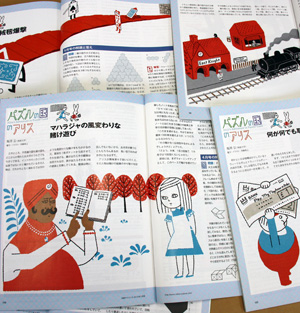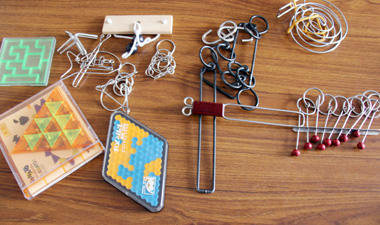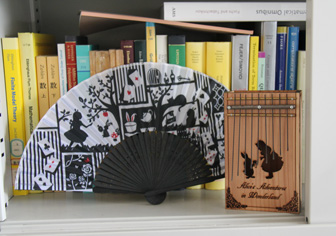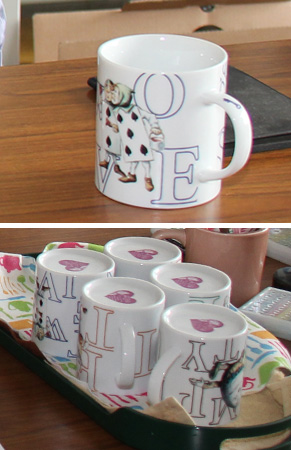TSUKUBA FUTURE
#011 Puzzleland Mathematics
Associate Professor SAKAI Ko, Faculty of Pure and Applied Sciences

The late Martin Gardner wrote the popular "Mathematical Games" column for more than 25 years, starting in 1956, in the general science magazine Scientific American, which currently has a circulation of over 400,000 in North America. The Japanese version of the magazine, Nikkei Science (first published in 1971 as Science), carried the translated version of his highly popular articles from the first issue. Lamentably, Gardner's series ended in 1981. A fan of Gardner's since his student days, Prof. Sakai eventually helped to translate the column and was disappointed when they came to an end.
Prof. Sakai had long been thinking of proposing a new column of mathematical puzzles. But on his own he felt incapable of devising math puzzles that would serve fittingly as successors to Gardner's masterful puzzles. It was then that he was fortunate to discover the book Mathematical Puzzles: A Connoisseur's Collection by the American mathematician Peter Winkler. The problems in the book were interesting and easy to understand, yet the solutions were not obvious. If one recognized the mathematical principle involved, however, the solution would come easily. Winkler also provided answers in the collection that were easy to understand, but the answers were brief, providing only the essence.
Prof. Sakai then contacted Peter Winkler directly and asked if he could adapt the puzzles from the book for a magazine column. Winkler's response was quite favorable. He even encouraged Prof. Sakai to enhance the presentation of the puzzles to make them a proper rival to Gardner's.
That is how the column "Pazuru no Kuni no Arisu" (Alice's Adventures in Puzzleland) began in Nikkei Science in the May 2009 issue. Prof. Sakai chose the title for the column as a play on words that paid tribute to a favorite book, Alice's Adventures in Wonderland. Many kinds of word play and riddles appear in this classic by Lewis Carroll, whose real name was Charles Dodgson, a mathematician at Oxford University specializing in symbolic logic.

The column appearing in Nikkei Science.
The illustrations by Shigeyuki Saito (graduate of the University of Tsukuba's former College of Information Science) are also popular.
Prof. Sakai himself studied information science at university, and after working at a private company he became involved in the Fifth Generation Computer Systems project (FGCS) initiated by the Japanese government. The FGCS project was conducted over a 10-year period starting in 1982, aimed at developing a new generation of computer technologies based on fresh concepts. The project was instrumental in developing much talent, and after its conclusion, Prof. Sakai took a position at the University of Tsukuba.

Part of Prof. Sakai's coffee table puzzle collection

Alice goods decorating his bookshelf; on the right is the kalimba made by his daughter
Prof. Sakai's field of specialization is theoretical computer science, particularly combinatorial game theory. This branch of mathematics calculates such things as the number of possible combinations that exist under certain conditions and if an ideal game move exists. Computerized shogi (Japanese chess) and other software fall into this category in its broad sense.
Prof. Sakai himself is not the type who becomes completely absorbed in games and puzzles. He is more interested in the theory and thinking that go into solving a puzzle. But after starting to produce the magazine column, he somehow gravitated toward collecting coffee table puzzles such as puzzle rings. The cardboard box in the corner of his office is filled with interesting puzzles of all kinds.
Because Prof. Sakai creates his column based on the books Alice's Adventures in Wonderland and Through the Looking-Glass, and What Alice Found There, he also began collecting Alice-related merchandise item by item. On his bookshelf is a kalimba (thumb piano) with an Alice theme made by his daughter who is currently studying design.
The specialized study of mathematics at the university level differs completely from the type of math studied through high school that focuses on merely solving problems and preparing for university entrance exams. For this reason, some students who did well in high school math face a culture shock at the university level, while others become thrilled upon encountering genuine mathematics at the university and take a liking to this field of study. It would seem that the ones who are held captive by their preconceptions of mathematics are not only those who think of themselves as bad at it. At any rate, don't you feel at least a little excited when you hear about the deep connection between Alice in Wonderland and mathematics?

He also collects Alice mugs
Article by Science Communicator at the Office of Public Relations


